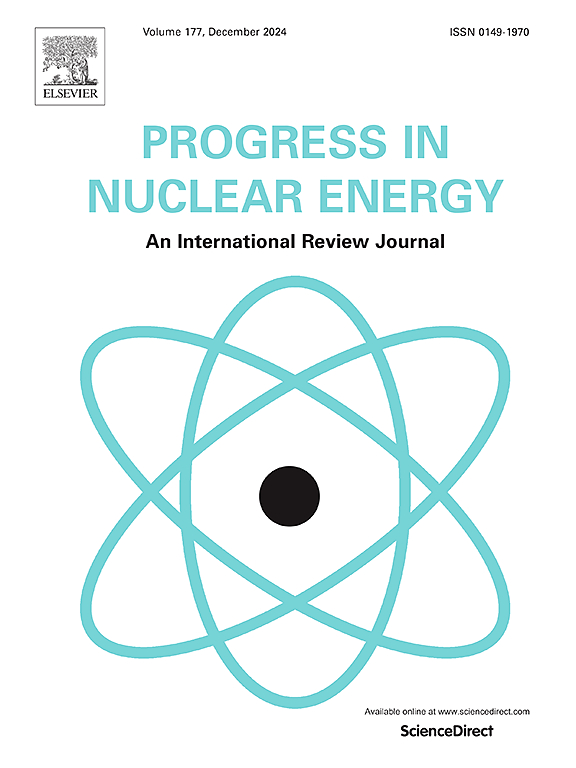Thermal-hydraulic performance of natural circulation system with narrow rectangular channel under heaving condition based on 1D/3D coupling analysis
IF 3.3
3区 工程技术
Q1 NUCLEAR SCIENCE & TECHNOLOGY
引用次数: 0
Abstract
As the demand for ocean exploration grows, nuclear reactors utilizing natural circulation for power generation have become a significant propulsion force for long-term operations. However, the coolant within the reactor system is influenced by ocean conditions, characterized by passive flow fluctuations. In this study, a one-dimensional (1D)/three-dimensional (3D) coupling analysis method is developed and applied to investigate the impact of heaving conditions on the flow and heat transfer performance of natural circulation with a narrow rectangular channel. The flow and heat transfer characteristics within the narrow rectangular channel, which represents the reactor core, are analyzed in detail using a three-dimensional approach, while the overall natural circulation performance of the system is assessed using a one-dimensional method. Validation is conducted based on pulsating flow experiments and natural circulation experiments. Subsequently, detailed thermal-hydraulic parameters for both the rectangular channel and the natural circulation system are obtained. The results indicate that flow fluctuations caused by the heaving conditions significantly influence the transient performance of both the rectangular channel and the entire natural circulation system. However, the time-averaged flow resistance and heat transfer capability remain unaffected by the heaving conditions. An increase in the heaving period results in a decrease in flow fluctuations within the natural circulation system, and the phase delay between heaving displacement and mass flow flux also diminishes. Conversely, as the heaving amplitude increases, flow fluctuations rise, but this has no effect on the phase delay. Due to the ring effect introduced by the heaving motion, the difference between the main flow zone and the wall zone dominates the transient thermal-hydraulic performance in the narrow rectangular channel. Additionally, the heaving motion does not significantly influence the cycle-averaged flow resistance or the cycle-averaged Nusselt number.
求助全文
约1分钟内获得全文
求助全文
来源期刊

Progress in Nuclear Energy
工程技术-核科学技术
CiteScore
5.30
自引率
14.80%
发文量
331
审稿时长
3.5 months
期刊介绍:
Progress in Nuclear Energy is an international review journal covering all aspects of nuclear science and engineering. In keeping with the maturity of nuclear power, articles on safety, siting and environmental problems are encouraged, as are those associated with economics and fuel management. However, basic physics and engineering will remain an important aspect of the editorial policy. Articles published are either of a review nature or present new material in more depth. They are aimed at researchers and technically-oriented managers working in the nuclear energy field.
Please note the following:
1) PNE seeks high quality research papers which are medium to long in length. Short research papers should be submitted to the journal Annals in Nuclear Energy.
2) PNE reserves the right to reject papers which are based solely on routine application of computer codes used to produce reactor designs or explain existing reactor phenomena. Such papers, although worthy, are best left as laboratory reports whereas Progress in Nuclear Energy seeks papers of originality, which are archival in nature, in the fields of mathematical and experimental nuclear technology, including fission, fusion (blanket physics, radiation damage), safety, materials aspects, economics, etc.
3) Review papers, which may occasionally be invited, are particularly sought by the journal in these fields.
 求助内容:
求助内容: 应助结果提醒方式:
应助结果提醒方式:


